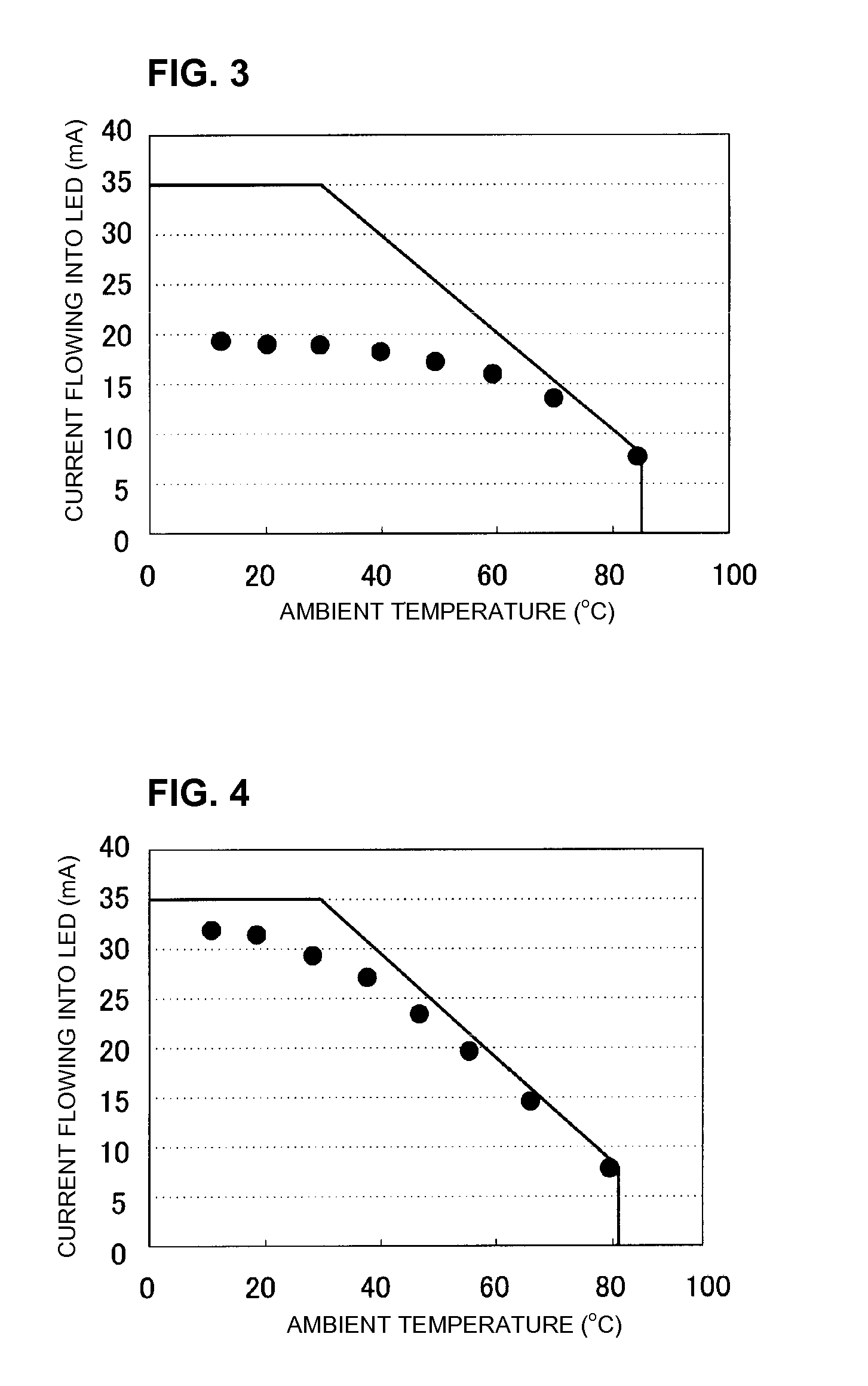LED drive circuit
- Summary
- Abstract
- Description
- Claims
- Application Information
AI Technical Summary
Benefits of technology
Problems solved by technology
Method used
Image
Examples
first preferred embodiment
[0032]Hereafter, working examples of a preferred embodiment of the present invention will be described.
[0033]The LED drive circuit 10 shown in FIG. 1 was formed using an LED element manufactured by the Nichia Corporation, NTSSW008CT, as the LED element 12 and an NTC thermistor manufactured by Murata Manufacturing Co., Ltd., NCP15XW222J03RC (25° C. resistance value 2.2 kΩ±5%, B constant (25 / 50° C.) 3950K±3%), as the temperature sensing element 16. Assuming that the output current of the constant-current output unit 14 is 20 mA, a current flowing into the LED element 12 in the LED drive circuit 10 is shown in FIG. 3. In FIG. 3, a solid line indicates the temperature characteristic of the allowable forward current of the LED element 12 and solid circles indicate a current flowing into the LED element 12.
[0034]As is understood from FIG. 3, the current flowing into the LED element 12 varies while taking a shape according to the temperature characteristic of the allowable forward current ...
second preferred embodiment
[0036]The LED drive circuit 20 shown in FIG. 2 was formed using an LED element manufactured by the Nichia Corporation, NTSSW008CT, as the LED element 12, an NTC thermistor manufactured by Murata Manufacturing Co., Ltd., NCP15XQ102J03RC (25° C. resistance value 1 kΩ±5%, B constant (25 / 50° C. 3650K±2%), as the temperature sensing element 16, and a fixed resistance having a resistance value of 35Ω±5% as the fixed resistance 18. Assuming that the output current of the constant-current output unit 14 is 35 mA, a current flowing into the LED element 12 in the LED drive circuit 20 is shown in FIG. 4. In FIG. 4, a solid line indicates the temperature characteristic of the allowable forward current of the LED element 12 and solid circles indicate a current flowing into the LED element 12.
[0037]By using the temperature sensing element 16 and connecting the fixed resistance 18 to the temperature sensing element 16 in series, the temperature change rate of the combined resistance value of this ...
PUM
 Login to View More
Login to View More Abstract
Description
Claims
Application Information
 Login to View More
Login to View More - R&D
- Intellectual Property
- Life Sciences
- Materials
- Tech Scout
- Unparalleled Data Quality
- Higher Quality Content
- 60% Fewer Hallucinations
Browse by: Latest US Patents, China's latest patents, Technical Efficacy Thesaurus, Application Domain, Technology Topic, Popular Technical Reports.
© 2025 PatSnap. All rights reserved.Legal|Privacy policy|Modern Slavery Act Transparency Statement|Sitemap|About US| Contact US: help@patsnap.com



